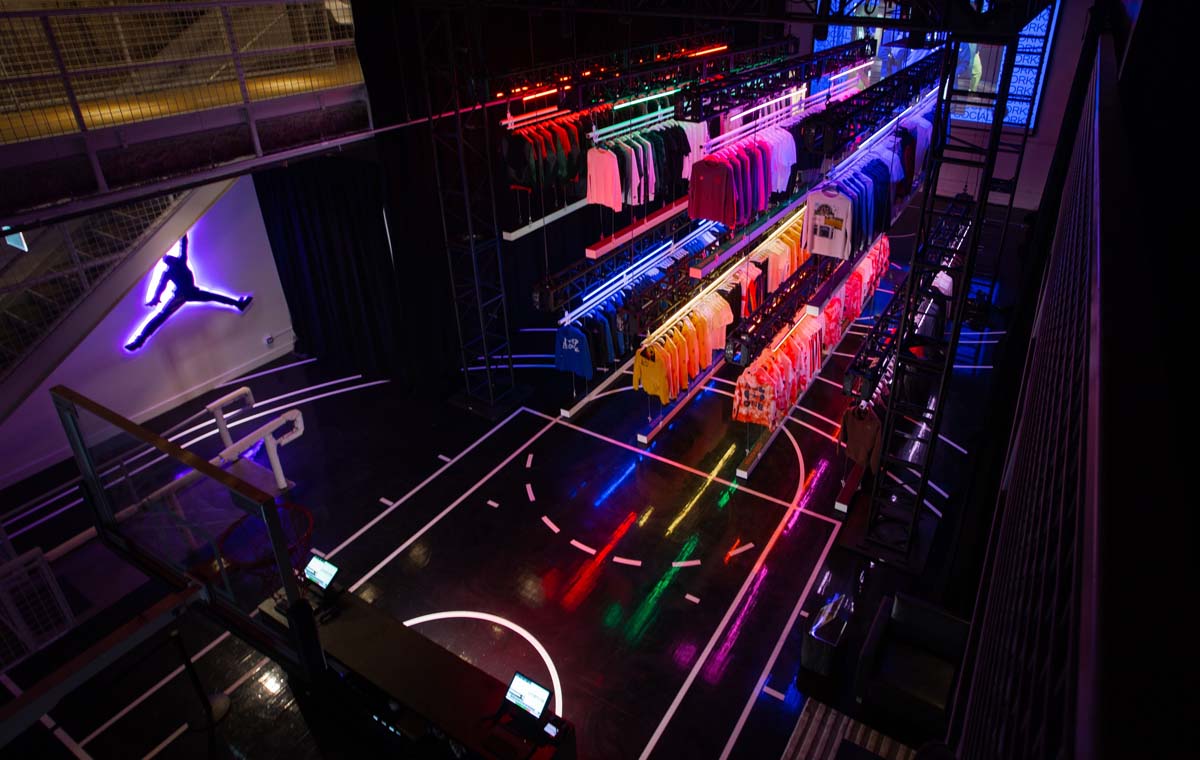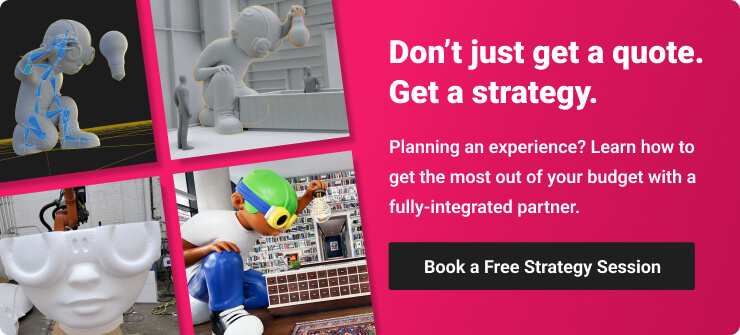Retail stores are always looking for ways to elevate the in-store experience, increase dwell time, and entice customers to shop in person. As customers become more savvy and quick to spot anything overtly sales-y, brands have to be more and more sophisticated in their approach to retail design and brand experiences.
One approach is through interactive retail. As consumers continue to demand more personalized experiences, these retail environments offer a unique opportunity for brands to connect with their audience in a meaningful and memorable way. In this blog post, we'll explore how interactive retail is evolving the in-store experience and how you can avoid gimmicky (often expensive) activations that attract attention but don’t necessarily further your brand’s goals.
What is Interactive Retail?
Interactive retail is an in-person approach to retail design that encourages interactivity through touch, movement, sight or sound, or some combination.
For example, makeup giant Sephora offers virtual try-on screens or mirrors that allow customers to see, without actually applying any makeup, what a particular shade of lipstick or blush looks like on them. Another all-star example is Nike’s flagship store in New York City, which features a digital basketball court that allows shoppers to shoot hoops and play games while they check out the merchandise. These immersive experiences invite customer participation and leave a lasting impression.
Benefits of Interactive Retail
When done well, interactive retail promotes enhanced customer engagement and experience, increased brand awareness and loyalty, and improved sales and customer retention. Interactive displays and experiences can provide quick answers to questions and the ability to compare many products quickly. They can also help customers feel more confident in their purchases because they are better informed, or in some cases, have gotten to try on or virtually experience the product before purchasing. This benefits brands by accelerating the buyer’s journey and reducing the rates of returned merchandise.
5 Types of Interactive Retail
Mobile Apps
The Starbucks app has become so ubiquitous for morning commuters that it’s almost easy to overlook. But the genius behind its success is that it takes almost all of the friction out of getting your coffee on the way to work, school, or the gym. It’s faster than the drive-through. You put your order in, exactly how you want it. You pay in the app. Voila! Caffeinated (or at least sugared-up) perfection that makes both the customer’s and the barista’s life easier. All in all, a textbook brand experience.
Other brands leverage mobile to facilitate online orders that can be picked up in-store or at the curb, provide in-store navigation to specific items, and even push out personalized offers and recommendations based on past purchases.
Augmented Reality
AR is one of the most prevalent examples of how brands are incorporating interactive retail. The IKEA Place app allows customers to visualize furniture in their homes, while brands like Adidas, H&M, Topshop, and Neiman Marcus use AR tools to enhance the in-store experience. By scanning a code with their phone or entering an augmented reality fitting room, customers can use the technology to visualize how clothes would look on them without physically trying them on.
Smart Mirrors
Similar to AR, smart mirrors elevate the customer experience in the fitting room, allowing customers to request different sizes and colors of their products, adjust the lighting to various settings, and even take photos and share them on social media – generating earned media for the brand. Brands like Nordstrom, which is well-known for its exceptional customer service, have been quick to adopt this technology because it helps customers find the right fit and color quickly while helping to ensure that what it looks like in the fitting room is what it will look like in the boardroom, ballroom or backyard.
In-Store Beacons
Macy's, Walmart, Sephora, and others are using in-store, aka ‘retail’ beacons that connect with customers' smartphones via Bluetooth to offer personalized deals, product recommendations, and real-time information on store layout and product availability. These small, battery-powered wireless devices send out signals to customers who have the store’s app on their phones, within a certain proximity to the beacon device. This form of proximity marketing helps retailers track customers' movements and preferences, empowering them to improve the in-store experience and create more targeted marketing campaigns, providing a more personalized interactive retail experience.
Low-tech Interactives
Does every interaction have to be digital? Of course not. Some of the best interactive retail displays are completely analog – from 2D questionnaires that help guide customers to the right style of hiking shoe to experiential graphic representations of the size of Shaquille O’Neal’s hands for a basketball display, there are many ways to engage and delight customers in a non-technical way.
Interactive Retail: How to Ensure Success
The examples above illustrate how interactive retail, when used appropriately, can enhance the customer experience, facilitate the buyer’s journey, and even help your sales team operate more effectively and efficiently. Interactive retail tools and technologies are best used to convey product information, streamline the shopping experience, allow customers to virtually try on or try out an item prior to purchase, and provide personalized experiences and recommendations.
The key to making these interactions valuable, and not gimmicky, is to make the experience relevant to the customer’s needs and goals and in alignment with your brand story and values. Starbucks’ customers need to pick up their orders quickly in order to make it to work on time. Mobile ordering makes that happen. If IKEA shoppers want to know if a navy sofa will complement the rug in their living room, the IKEA Place AR tool helps them visualize the sofa in their space, giving them the information they need to make a decision. But brand activations can feel cheap and cheesy if they don’t add meaning to the customer experience, and are done just for the sake of capturing attention, or to take part in a trend.
Finally, take the time to find a partner experienced in not just retail design, but also brand activations, media and technology, and digital fabrication. Choosing a partner that understands experiential marketing, retail environments, and interactive displays will help ensure your shop or showroom leverages interactive retail to its full potential.
Ready to Incorporate Interactive Retail?
As the use of interactive retail continues to evolve, it’s important for brands to stay ahead of the curve and focus on implementation that will help drive success. With options like smart mirrors, retail beacons, touch screens, and more, brand managers and CMOs can choose an approach that meets their goals while also appealing to a savvy consumer base.
At Bridgewater Studio, we have the technical know-how and creative aesthetic to develop engaging experiences tailored for any space. We learn about your business from top to bottom so our designs are informed by thorough research and expert advice. Discover how you can build a customized interactive retail experience that’s sure to wow customers and boost sales, by booking a no-obligation introduction to Bridgewater today.


.png)
.png)
.png)







